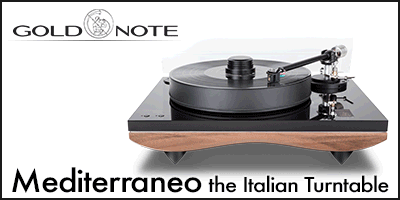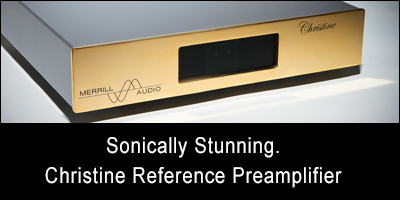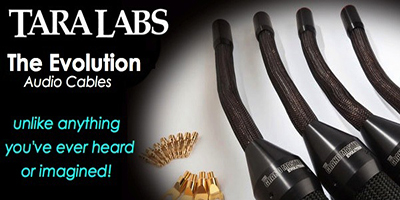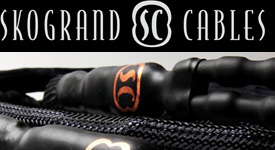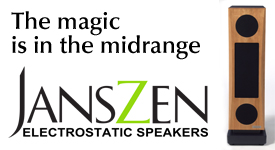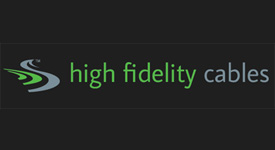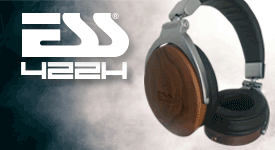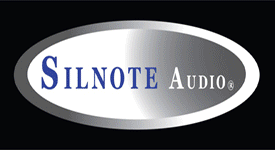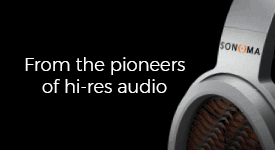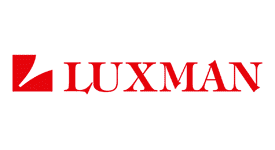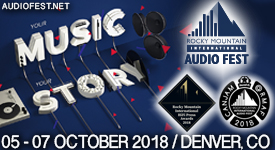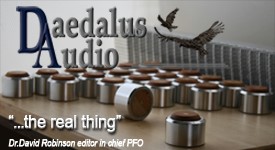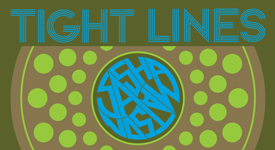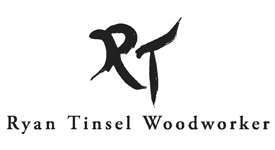If you haven't yet read the Audio Note (UK): Peter Qvortrup & Darko Greguras on making digital sources sound like music. Part 1. post here at Jeff's Place from about nine weeks ago, you can read it HERE.

Peter Qvortrup, Audio Note (UK).
A quick recap: Last Fall I had a very enjoyable and illuminating visit with Peter Qvortrup at Audio Note (UK) headquarters, just outside of Brighton, England.

Daniel Qvortrup, Audio Note (UK).
Peter Qvortrup, Daniel Qvortrup, Andy Grove, and Darko spent time with me showing me the Audio Note (UK) operation, telling me about some of the exciting concepts and products they've been working on developing, and we had an enjoyable listening session at Peter's home with both vinyl and digital sources.

Darko Greguras, Audio Note (UK).
During my visit I had some very intriguing technical discussions with Darko Greguras and Andy Grove. Darko and Andy impressed me with their vast technical knowledge, the exciting ideas they were developing, and explaining the "how" of achieving musicality in audio product development.

Andy Grove, Audio Note (UK).
Andy and Darko have impressive research and development KSAs (knowledge, skills, and abilities) that are on the same sort of lofty level as the scientists and engineers I worked with in the national laboratories complex in the U.S. prior to my retirement.
I told Peter how impressed I was with Andy's and Darko's enthusiasm for exploring the leading edge of the audio arts.
I felt right at home visiting Audio Note (UK), as there was an aura of excitement and exploration into advancing the audio arts that was pervasive, which made me feel right at home, like I visiting a "national laboratory" dedicated to the audio arts.
Audio Note (UK) spends a considerable amount of time, money, and effort on research and development in the audio arts, and you can hear it in the performance of their products.
While we discussed many fascinating research and development topics, I was particularly impressed with Darko's enthusiasm for advancing digital performance in terms of musicality (i.e. audio components' related to the basic elements of live music) and visuospatial performance related to the non-musical artifacts of the recording process (i.e. things like imaging, soundstage, etc.) that audiophiles enjoy (more HERE).
In my experience, there are lot of audio companies that can achieve high levels of visuospatial performance in their audio products, but there are very few that can also achieve live-like musicality, which is the most important aspect of audio performance in achieving high-fidelity to live music, in my opinion.
Audio Note (UK) is one of the few audio companies that knows how to achieve both a high level of musicality and visuospatial performance, and that is an impressive accomplishment indeed.

Peter's digital front end in his home listening room.
I've been an analog listener for most of my six decades or so on Planet Earth, with a few forays here and there into listening to digital sources, but digital always came up short for me in its ability to sound believably like live music, and in particular, Red Book CDs seemed like an amusical lost cause to me.
That all changed when I heard how musically natural Red Book digital media sounded in Peter's home Audio Note (UK) system, and I was immediately impressed with the high-level of live-like musicality the Audio Note (UK) team has achieved with their digital front ends.

Audio Note (UK) CD 2.1x/II Level Two Red Book CD Player
Then Peter sent me their entry level CD 2.1x/II Level Two Red Book CD Player to listen to (review coming this Fall), and I found that it was not just the cutting-edge Audio Note (UK) digital products that shared impressive performance in terms of musicality and visuospatial attributes, but also their entry level products as well.
I have 1000 plus Red Book CDs that I haven't listened to in years, and I have to report that I've had a ball going back and listening to my Red Book CDs. I never imagined that Red Book CDs could sound so musical, so enjoyable, and so full of life as they do with the entry level Audio Note CD 2.1x/II Level Two Red Book CD Player.
While analog and digital media do sound different, this was the first time I had experienced listening to digital sources that really sounded - and felt - live-like in the way they reproduced music, and in a fashion that was comparable to the enjoyment I get from LPs.
Of course, immediately I wanted to know the "how" and "why" of the Audio Note (UK) team's accomplishment in achieving such a high degree of musical performance with Red Book digital media, which has led to these posts about it.
Without further ado, let me present Darko Greguras' Part 2 post, where Darko discusses additional insights into making digital sources that provide a live-like like musical experience, and with more insights to come in future posts!
Building a great sounding Digital to Analogue Converter requires far more than simply choosing a DAC IC or module; it is a fine composition of many elements, not a simple building block. We could take an FR4 2.4mm board sitting on 20mm brass standoffs, wired with, for example, 16/02 wire with soft insulation, a power supply (which can vary greatly in design and complexity) and a pair of I/V transformers, a valve line stage with a pair of 35:1 line stage step down transformers, all built in a 3mm powder coated aluminium chassis. So it is, in reality, a system in itself.
Therefore, in order to create a product which sounds very musical, and can communicate successfully to real human listeners, taking the ‘grab an iron and get soldering!’ approach is not going to cut it. We should be able to imagine the sound of the finished product before we even start to work on it.
The real process starts using science, maths and computer modeling because we want to achieve an intrinsic design balance right from the beginning. We want to get our PSUs working in harmony with the circuits, and we want to be very careful with group delay. Depending on the Level of the product, we could apply a well balanced selection of parts, starting with the transformer core material, choosing between copper or silver primaries and secondaries, which would then suggest the level of resistors, electrolytic capacitors, coupling capacitors, board materials, point to point wire gauge and material, and finally the general wiring, depending on the particular position in the circuit. The final tuning is very important, and happens after the unit has completely run in. At this stage, changing a single resistor in a critical place is of even greater importance, as it influences the total sound of the product in harmony.
This design and production system as described was refined over the years by Andy Grove. Andy's attention to detail, experience and knowledge simply cannot be repeated.
So if we are to discuss the digital replay chain, I think it would be good to start right from the beginning, from the CD transport. Unfortunately in my case, researching CD transports happened as the final step in the chain, primarily because, after 7 years of deep research, I was still not completely happy with the sound of the Discrete DAC Project.

The Discrete DAC Project in its third iteration.
So you may ask, what is wrong with the sound of the CD PRO2 mechanism, seeing as it is a fundamental component in our range of CD Transports, from the CDT Two/II right up to the flagship CD Six?
What I discovered is that using increasingly better parts in the digital to analogue converter simply did not produce the same level of improvement as when, for example, one does this to create a better sounding phono stage.
Developing the Discrete DAC gave me a great amount of freedom and the opportunity to experiment with materials, shapes, cuts, right down to the shape of the signal trace; discrete inverters; old fashioned D type flip flops, etc. Lifting this platform into Class A mode gave me a good insight into the sound of the process itself ... and no, the CD PRO2 was not good enough!
Using our Comparison by Contrast Method, I was not completely happy with the differentiation between the various recordings, from a very old Decca to the latest modern releases.
One of the main problems was the intrinsic lack of gradation in the energy of piano recordings. It was in a way, indistinct, more like the sound of a synthesizer rather than a real piano.
This was the major motivation to start work on the Belt Drive mechanism. I hoped this would give me an opportunity to use all I had learned when designing the TT3 turntable drive system, that sort of electro-mechanical harmony or sympathy; that was the key element I wanted to achieve.

Belt drive components for the test rig.
I started by simply adding a piece of a CNC cut wood to the standard magnetic clamp. This proved to be nothing short of a revelation. The modification increased the mass of the clamping system by 120 grams, so when I took the next step and created the belt drive system, I needed to carefully calculate the ratio between the pulleys and the belt running between them, in order to compensate for the lack of torque provided by the stock Mabuchi motor. For this version, I retained the standard onboard H bridge drive and simply tuned it, compensating for the new loop.

Belt drive test rig.
The first thing I noticed was a lack of what we can call a ‘system sound’ of its own. There was more freedom, more flesh and blood, fluidity, less stress, less processing, less sound of the typical tightly controlled loop and a far greater degree of tonal contrasts. When we usually describe something as sounding like an Audio Note (UK) product, we actually mean that the equipment has less of its own sound signature, and we can instead hear more of the actual recording. Don't get me wrong, I like when the playback process is controlled. But there is a big difference between operational control and the system beginning to audibly sound too controlled. Getting this balance right is a fundamental aspect that contributes to a system’s ability to actually communicate music correctly.

Belt drive test rig.
As usual in R&D, when we are on a good path, we simply carry on the investigation, and I am happy to say that this concept proved what we already knew. It is very important how we spin a CD; model wise, electronically, materials wise, a bridge amplifier active component wise, output impedance wise, how many strands a piece of wire has and what the insulation material of this wire is, because everything is in the signal chain, and all of it is therefore important.
Currently I am using a big Mabuchi capstan motor and the TT-Three PSU4 output stages, which as a system, gave me more freedom when it came to critical loop adjustments, and sonically, yes, it is off the scale. It sounds, bigger, fuller, 'more analogue', unrestricted, and communicates better. It works in harmony with the music it plays, not against it.

Belt drive test rig with top cover in place.
Readers who are familiar with setting up a turntable, particularly the tonearm, will understand full well how important critical damping is. In line with that, I slightly readjusted the focus and radial tracking drivers for the laser focus lens, both with compensation and selected components, which resulted in more analogue decays and much sweeter transients.

Close-up of the belt drive test rig.
Because we discussed it in depth in the previous article, I don't think I need to cover again our reasons for choosing 1X or non-oversampling technology without processing, and why that technology offers a higher degree of musical freedom (see Part 1 HERE for this information).
Essentially, the success of this system depends heavily on the SPDIF output buffer in the CD Transport, the output digital TX, the digital cable, input receiver, and PLL components. Think of extracting the sampling clock from it- our system conductor. Think of the signal as analogue rather than digital, because this is what it is. Our choice of DAC chips are the Philips TDA1543, Analogue Devices AD1865 and our in house complete Discrete DAC, which is currently set to 18bits but it could be easily increased to 22-24 bits (more about that in a future article).
I would like to thank Darko for taking time to write this introduction for us on how important the CD drive mechanism is to achieving a high level of musicality in Red Book digital playback.
I'll be looking forward to your next installment about digital, Darko!
As always, thanks for stopping by, and may the tone be with you!

